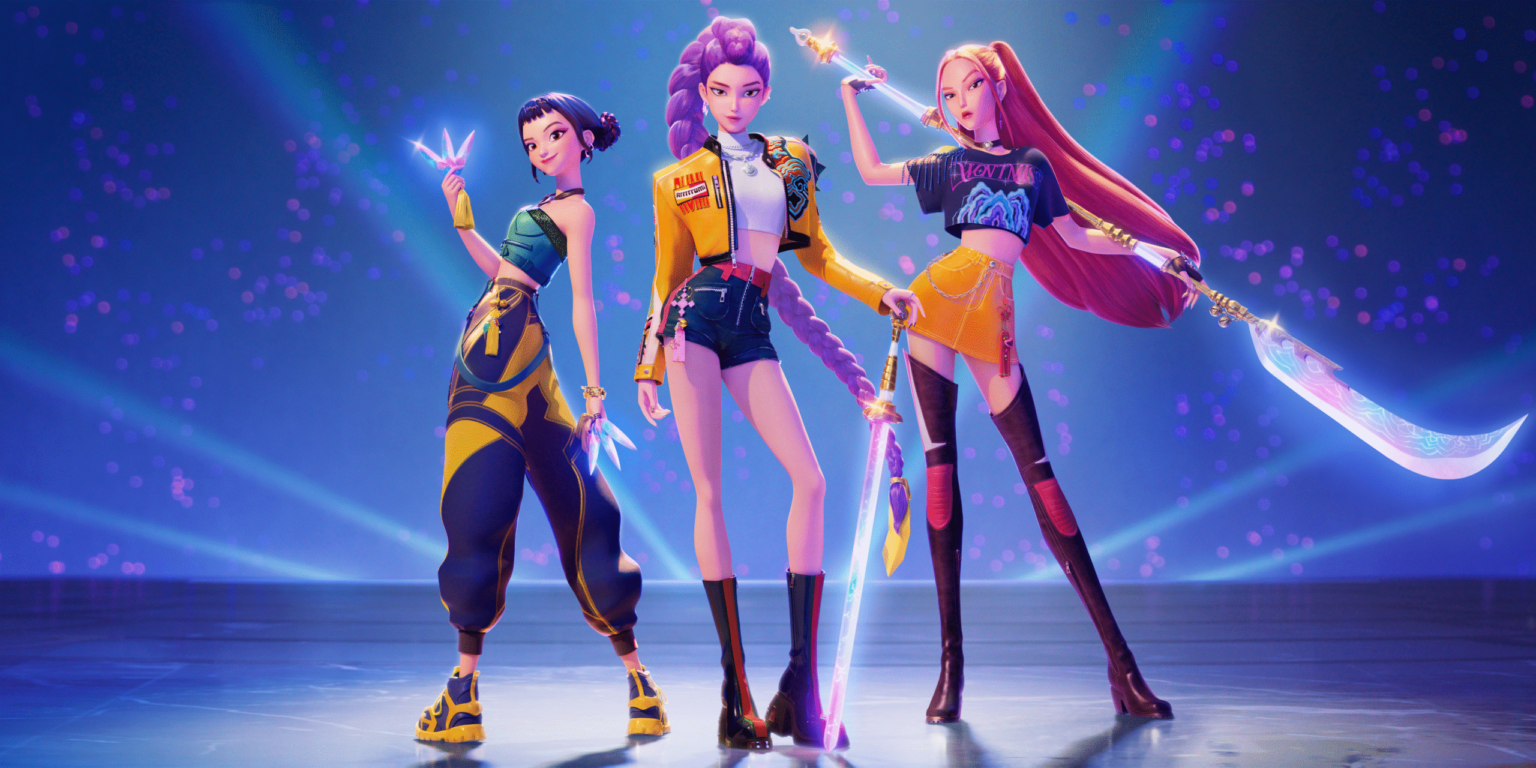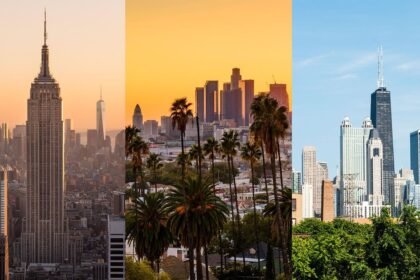The Rise of KPop Demon Hunters as a Global Hit
Since its release in June, KPop Demon Hunters has become an unstoppable cultural phenomenon. The animated feature has skyrocketed to Netflix’s top charts, attracting over 33 million views in just two weeks. Currently ranked among the top 10 in 93 countries, the film has captured the hearts of both dedicated K-pop fans and general viewers alike. Social media platforms are flooded with fan art, tribute videos, and trending hashtags, and audiences everywhere are already demanding a sequel.
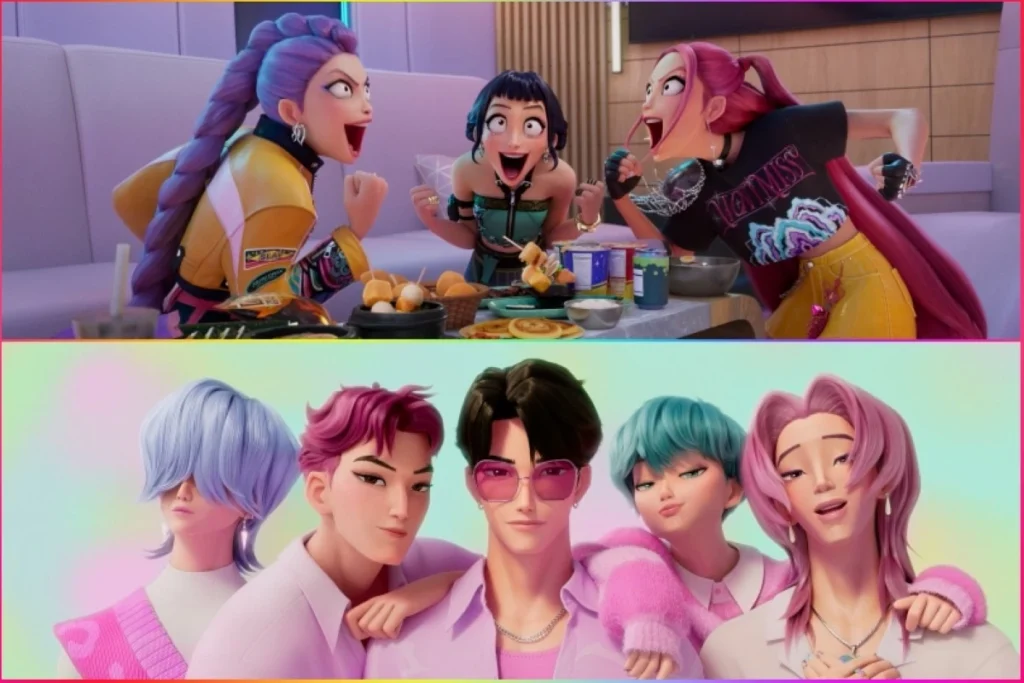
But what makes this movie more than just another animated release? The answer lies in its perfect combination of high-energy music, dynamic storytelling, and cultural authenticity.
Why Music is the Heartbeat of KPop Demon Hunters
One of the biggest reasons for the film’s meteoric rise is its soundtrack. Since its debut on June 20, two fictional bands from the film—Huntr/x, a fierce all-girl K-pop group, and their rivals, the enigmatic Saja Boys—have dominated global music charts. Tracks from the film have even overtaken heavyweights like BTS and Blackpink on Spotify, securing the top two spots on the U.S. chart, and seven songs have landed on the Billboard Hot 100.
Unlike many animated films where music is an afterthought, in KPop Demon Hunters, songs are woven into the very fabric of the narrative. Each track enhances the emotional depth of the scenes, turning fight sequences into spectacular, music-powered showdowns. K-pop is not a backdrop here—it is the weapon, the identity, and the soul of the story.
KPop Demon Hunters: A Story Beyond the Stage
At its core, KPop Demon Hunters is about more than fame and fandom. The plot follows Huntr/x, a trio of global superstars—Rumi, Mira, and Zoey—who lead double lives. While they shine on stage as idols, their secret mission is to protect humanity from supernatural forces, including their dark counterparts, the Saja Boys.
This unique premise merges fantasy, music, and action, creating a cinematic experience that resonates with viewers worldwide. Themes of friendship, trust, and staying true to oneself give the film a universal appeal. Beneath the glamorous visuals and adrenaline-filled sequences lies a coming-of-age story about identity and self-acceptance, making it relatable even for those unfamiliar with K-pop.
Cultural Authenticity That Resonates
Another reason behind the film’s success is its authentic portrayal of Korean culture. The creative team behind KPop Demon Hunters went beyond surface-level aesthetics. They traveled across South Korea to capture real-life details—from historic Seoul landmarks like the Namsan Tower to the intricacies of Hanuiwon (traditional Korean medicine clinics) and local dining customs.
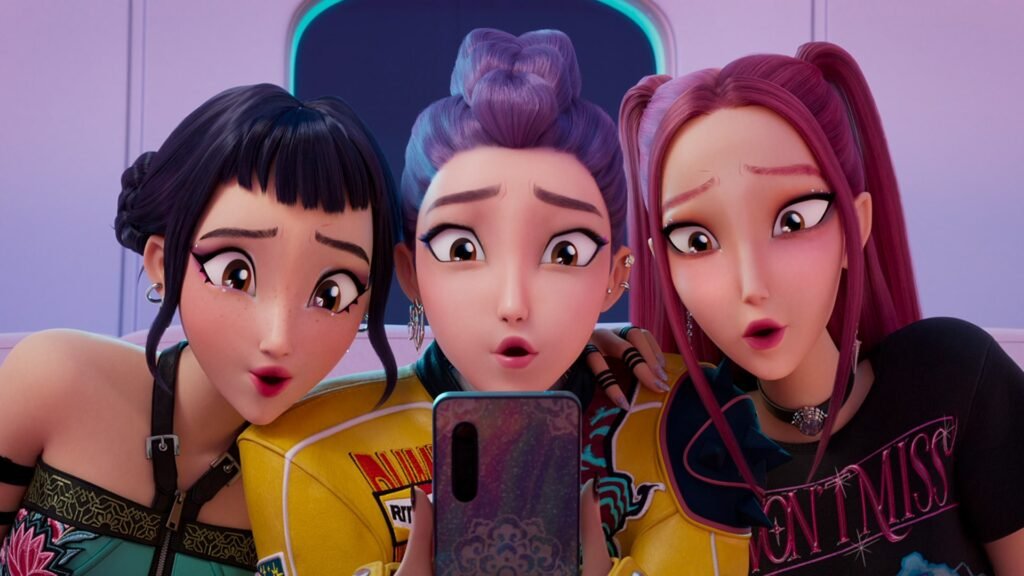
The film beautifully integrates elements of traditional Korean life such as public bathhouses, street markets, and folk architecture, while also showcasing modern Korean trends and urban design. These thoughtful inclusions make Korean audiences feel represented while giving global viewers a genuine cultural experience.
Visual Details and Symbolism
One striking detail is the animators’ decision to align character mouth movements with Korean pronunciation, even though the final dialogue is in English. This cultural sensitivity extends to subtle gestures, reactions, and occasional Korean words or lyrics within songs.
Symbolism is woven throughout the film:
- Huntr/x’s weapons reflect designs inspired by Korean shamanistic traditions.
- The Saja Boys’ attire resembles the Korean Grim Reaper.
- Elements like Dokkaebi (goblins) and Dangsan trees nod to deep-rooted folklore.
- The mascots, Derpy (a tiger) and Sussy (a magpie), reference Korean myths of guardianship and good fortune.
Why Animation Was the Perfect Medium
Animation gave the creators freedom to merge K-pop aesthetics with high-fantasy action. Battle scenes infused with synchronized choreography mimic real-life Kalgunmu (K-pop’s signature precise dance moves), while vivid backdrops mirror the drama of live concert stages. This fusion appeals to both anime fans and K-pop enthusiasts, creating a unique crossover experience.
The Power of Global Fandom
The film doesn’t just depict fandom—it celebrates it. From fan signing events to colorful light sticks and placards, the movie immerses viewers in the authentic world of K-pop culture. For many fans, KPop Demon Hunters feels like a love letter to their passion, which explains the viral explosion of fan art and social media buzz.
Behind the Scenes: Music Production at Its Finest
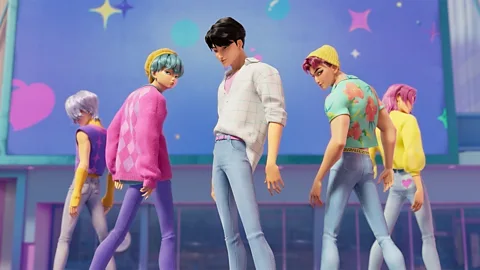
Directors Maggie Kang and Chris Appelhans knew music would make or break this project. To ensure authenticity, they partnered with leading figures in the K-pop industry, including Teddy Park (producer for Blackpink) and Grammy-winning Lindgren (associated with BTS and TWICE). Their expertise helped craft a soundtrack that feels genuine and globally appealing, proving that music can unite audiences across cultural lines.
Tradition Meets Trend
The film is a stunning example of how modern entertainment can honor cultural roots. Huntr/x’s stage costumes incorporate traditional Korean elements while staying stylishly contemporary. Ritualistic motifs—such as fans, swords, and shamanic charms—blend seamlessly with glowing neon stages, making each performance both magical and meaningful.
Universal Themes for a Global Audience
At its heart, the film carries a message of self-acceptance and resilience. Characters struggle with identity and societal expectations, but their journey reflects a universal truth: embracing who you are is the ultimate power. This theme resonates across cultures, making KPop Demon Hunters not just a movie but a movement.
